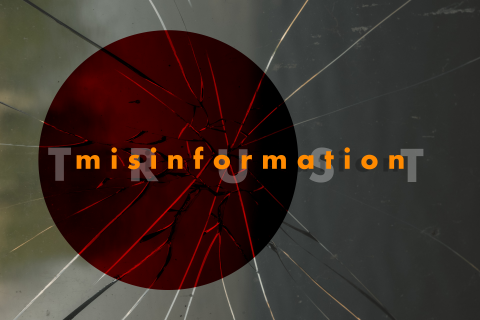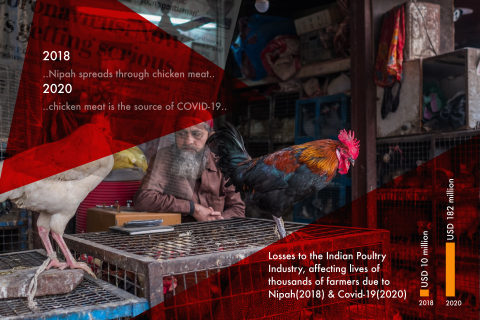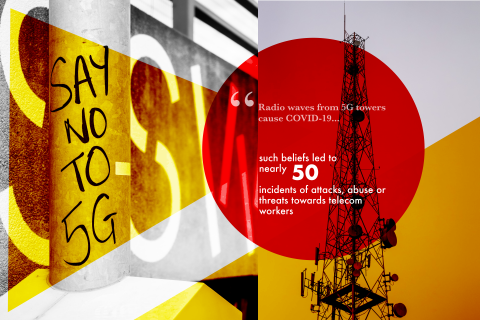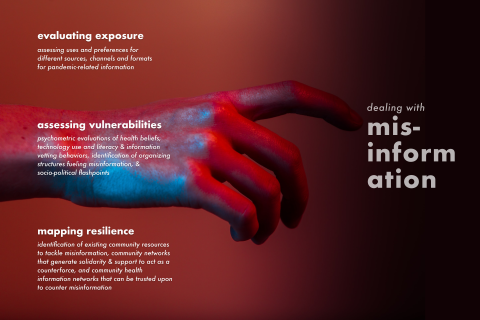How misinformation affects social determinants of health

The COVID-19 pandemic has triggered a surge in online misinformation, a problem christened by the World Health Organization (WHO) as an “infodemic”. Thus far we have seen the WHO lead the response to the infodemic by establishing the EPI-WIN platform, forging a dialogue between misinformation researchers, policymakers and technologists to identify solutions, and organizing the inaugural infodemiology conference. These critical and valuable responses address the technological, political and structural aspects of the online misinformation problem. This commentary focuses on the health-related dimension of misinformation: what is the impact of misinformation on public health and to what extent should misinformation be considered a global health policy priority moving forward?
To answer this question, let us consider the WHO’s social determinants of health (SDH) framework. According to this framework, social structures, systems and policies, and associated power dynamics create socioeconomic strata indicated by levels of income, education, occupation, according to social class, gender, race and ethnicity. These stratifications systematically produce inherent inequities for disadvantaged groups in the form of differential exposure and vulnerability to health risks, including material circumstances of life, social, biological and behavioral factors, and access to healthcare. These pathways lead to disparities in population health outcomes.

Conversations with key public health actors in the 2018 Nipah outbreak in Kerala, India (documented in the Batsapp Project podcast series) and emerging evidence from COVID-19 suggest that misinformation affects the pathways leading to these health disparities. Below are some ways this influence can be illustrated.
Income

Misinformation about Nipah virus spreading from chicken meat as opposed to bats (the original hosts) spread through a digitally forged letterhead of a district medical officer in Kerala, India during the 2018 outbreak. This message circulated on social media platforms, instilling false fears in the public psyche, and imposing a loss of more than USD 10 million on poultry traders during the festive month of Ramadan. A similar message claiming chicken meat as the source of COVID-19 emerged this year causing a bigger setback of USD 182 million to the Indian poultry industry, affecting the lives of thousands of farmers.
Education
Resistance to the proliferation of online misinformation has emerged in various parts of the world through data literacy initiatives such as Lie Detectors (Brussels, Belgium) and Satyameva Jayate (Kerala, India). Both these initiatives have been launched in schools with an aim to imbue critical thinking faculties among students who are native users of digital technologies. These initiatives however beget the question surrounding data literacy capacity among children with no access to schools. The penetration of mobile technologies into remote areas and the acceleration with which technologies produce and spread misinformation are bound to exacerbate these inequities in data literacy.
Occupation

Conspiracy theories – one form of misinformation – suggesting that radio waves from 5G towers cause – directly or by suppressing the immune system – COVID-19 have gained ground especially in the US and UK. This misinformation campaign led to nearly 50 incidents of attacks, abuse or threats towards telecom workers in England. During the 2018 Nipah outbreak, misinformation about the modes of transmission about the virus contributed to social ostracization of healthcare workers. For instance, nurses boarding a public bus in Kozhikode would result in other commuters alighting for fear of contracting the virus. From an SDH perspective, these incidents expose the vulnerability of these workers to harm directed at them from community members and exacerbate the risk of negative physical and psychological outcomes by introducing new stressors into their professional environment.
Race/Ethnicity
Outbreaks commonly disturb racial and historical sensitivities through misinformed behaviors like blame attribution. Asians in the US, for instance, have been targets of xenophobic outrage with nearly 1,700 reports of discrimination being recorded from the beginning of the COVID-19 outbreak until May 2020. One of the misinformation campaigns circulating on social media attributed the 2018 Nipah outbreak to the influx of Bangladeshi immigrants because the first victims belonged to the Muslim community. Racial prejudice and oppression contribute to worse psychological and physical health outcomes among targeted communities in the long-term.
Social Cohesion

The impact of misinformation on each of the above determinants, in turn, adversely affects relationships between community members and institutions. For instance, community members may become unsure about adhering to health directives (like social distancing) issued by the local health establishments. Workers from health and other spheres like the telecom industry may become wary of engaging with their professional commitments. Relationships between community members belonging to different racial and ethnic groups become fractious. And trust – the bedrock of risk communication efforts by health establishments during outbreaks – between community members and in health institutions is eroded.
By reinforcing psychological biases, misinformation exacerbates health disparities across social strata and resident fissures in community networks. While multi-sectoral, interdisciplinary approaches to manage the informational environment are necessary, outbreaks in the 21st century have revealed an additional task the public health establishment needs to achieve.
This task refers to systematically mapping the nature and extent of differential exposure, vulnerability and resilience to misinformation among communities. Evaluating exposure involves assessing uses and preferences for different sources, channels and formats for pandemic-related information. Assessing vulnerabilities could include psychometric evaluations of health beliefs, technology use and literacy and information vetting behaviors, identification of organizing structures fueling misinformation, and socio-political flashpoints.
Mapping resilience against misinformation could comprise an identification of existing community resources (social, legal and technological) to tackle misinformation, community networks that generate solidarity and support to act as a counterforce, and community health information networks that can be trusted upon to counter misinformation. Recognizing the contributions of misinformation to social and structural determinants of health will enable the public health establishment to formally incorporate assessments of exposure, vulnerability and resilience to misinformation to inform risk communication efforts. The WHO could play a leading role in providing technical assistance to member countries to develop capacity, implement these assessments and share knowledge through its global fora.
You can listen to the Batsapp Project, the full story of Kerala’s response to online misinformation and expert perspectives on the psychological dimensions of the global infodemic problem on iTunes, Spotify, SoundCloud, and Google Podcasts. The podcast series was funded by the UK Digital Economy Crucible.